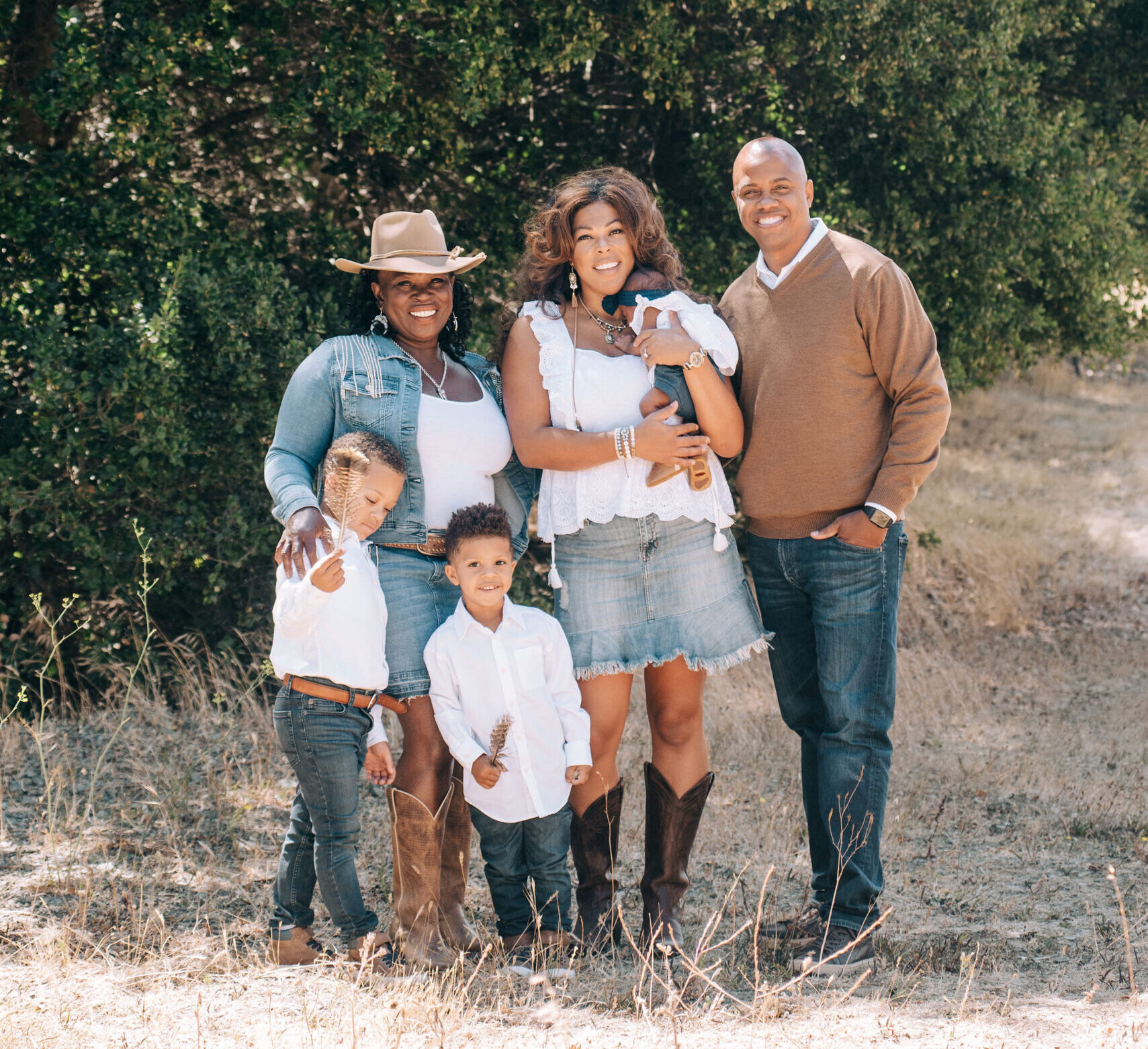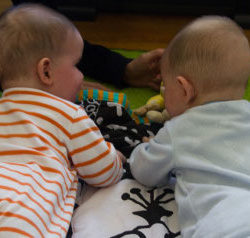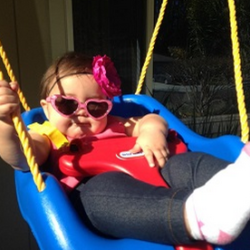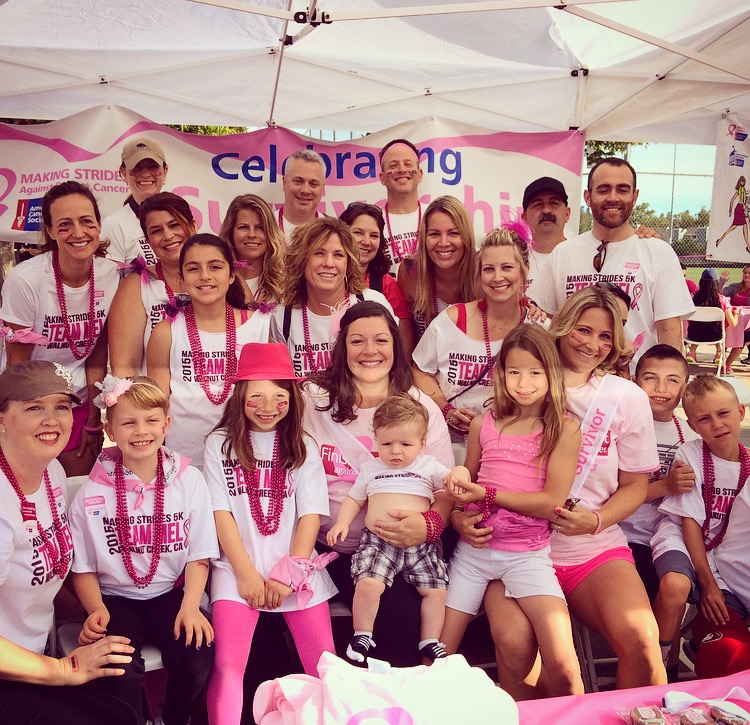Using IVF and PGT to Heal Sickle Cell Anemia and Responsibly Grow a Family
Baby Cameron brought joy – but with sickle cell anemia. Baby Bryson could provide the cure.
Monique and Derek Fritz were overjoyed to learn they were going to have a baby, but joy soon turned to fear at a routine checkup during the second trimester. The couple was told they were both carriers of the sickle cell anemia, or sickle cell disease (SCD), trait and their unborn child had a 25% chance of contracting the disease.
“We were both surprised because nobody on either side of our family had ever suffered from sickle cell anemia,” says Monique.
SCD is genetic and causes red blood cells to have a crescent shape like that of a sickle instead of being the normal disc shape. This malformation causes the red blood cells to become trapped in small vessels, blocking blood from reaching different parts of the body, causing tissue damage and pain.
When baby Cameron was born that summer, the Fritzs’ worst fears became a reality. Not only did Cameron have SCD, but he had the most severe form of the disease, hemoglobin SS (Hb SS). Individuals with this variation experience the worst symptoms at a higher rate.
“We were told the first several months would be a ‘honeymoon period’ where Cameron would not likely experience any negative impacts from the disease,” says Monique. “He was symptom-free for more than eight months.”
At nearly nine months old Cameron had his first pain crisis, causing him to seize up and become motionless in excruciating pain. This began his three-year battle with the agonizing symptoms of his disease, which almost quarterly landed him in hospitals and clinics where he was hooked up to IVs full of pain medications and fluids.
Finding hope amidst the hurt caused by sickle cell anemia
The Fritzs had been told by doctors that the only way to cure Cameron of these pain crises was a perfectly matched bone marrow transplant. This planted a seed in the couple’s mind and they began to consider having another child to not only grow their family but also in hope of finding a cure for Cameron. When a woman at a sickle cell awareness group shared the story of her child being healed after a transplant, the Fritzs felt sure this was the path they should take.
Pursuing a cure for Cameron’s sickle cell anemia through IVF and preimplantation genetic testing
Monique and Derek knew adding to their family naturally as they had before was a gamble and could lead to two children suffering from the same disease. In order to responsibly grow their family and give Cameron the best chance at a matched donor, the couple decided to use in vitro fertilization (IVF) and preimplantation genetic testing (PGT).
Their best chance of finding a matched donor was having another child, who would be much more likely to have the same genetics in bone marrow that can be transplanted in the first child. PGT evaluates the genetic makeup of an embryo but can only be performed on an embryo created through IVF in the lab before transplantation into the womb. If PGT indicates the embryo does have the same human leukocyte antigens (HLA) that make its blood or bone marrow a match with the previous child, that embryo is implanted in the mother’s womb.
The Fritzs’ hematologist highly recommended they trust this delicate procedure to the experts at Reproductive Science Center of the San Francisco Bay Area (RSC). Monique and Derek quickly got in touch with the clinic and began seeing Dr. Evan Rosenbluth, who guided them through the IVF with PGT process.
“They explained everything so clearly,” says Monique. “RSC really simplified the process to the point where all we really had to do was show up.”
Making a miracle embryo
After Monique had undergone ovary stimulation, RSC’s Dr. Michael Homer retrieved her eggs. His humor helped relax Monique during the procedure and took her mind off the stress of the upcoming weeks and months. She knew that even if one of those eggs was successfully fertilized in IVF, there was no guarantee the resulting embryo would properly implant in the uterus and grow into a full-term baby.
The Fritzs had the additional hurdle of finding an embryo that would be disease-free and the perfect genetic match for Cameron. RSC worked with an outside lab to create a unique test for the Fritzs’ embryos to not only test for signs of sickle cell anemia, but to search for genetic markers that would show if any of the embryos would be a fit for Cameron’s transplant procedure. Although the chances were slim, the first round of IVF yielded that perfectly matched embryo.
Monique’s worries soon faded. The embryo moved from conception to live birth, and the Fritzs welcomed their second son, Bryson, into the world.
A life-saving bone marrow transplant
Once Bryson hit 10 months old, the boys underwent the bone marrow transplant, and the family experienced yet another success. After three years of suffering, Cameron was fully cured and his average life expectancy no longer dwindled in the mid-40s. He didn’t have the debilitating pain he had experienced before and was finally able to truly be a kid and live a normal life.
Cameron is now five and says three-year-old Bryson is his hero. Monique and Derek continue to tell the boys the story of how Bryson’s bone marrow saved Cameron’s life.
“They were really young when they had the procedure and don’t remember much anymore,” says Monique. “I want to make sure they never forget the journey they took together to cure Cameron.”
Adding another child without the sickle cell genetic disorder
As things calmed down and Cameron’s health was no longer a concern, the Fritzs began to realize something was missing.
“My husband really wanted a little girl,” says Monique.
The couple transferred a healthy female embryo, and their brave boys now have a little sister, 11-month-old Maya Rose.
Words of wisdom
Monique wants anyone trying to avoid passing along genetic disorders to their children to know that IVF with PGT can give them comfort and hope in safely growing their family. She shares that the process isn’t that painful and is a small sacrifice for the joy of having a healthy baby.
Although it can be intimidating at first due to the financial burden and time commitment for appointments, it’s important to give it a chance. She says the best way to avoid becoming overwhelmed is to simply take it one step at a time.






